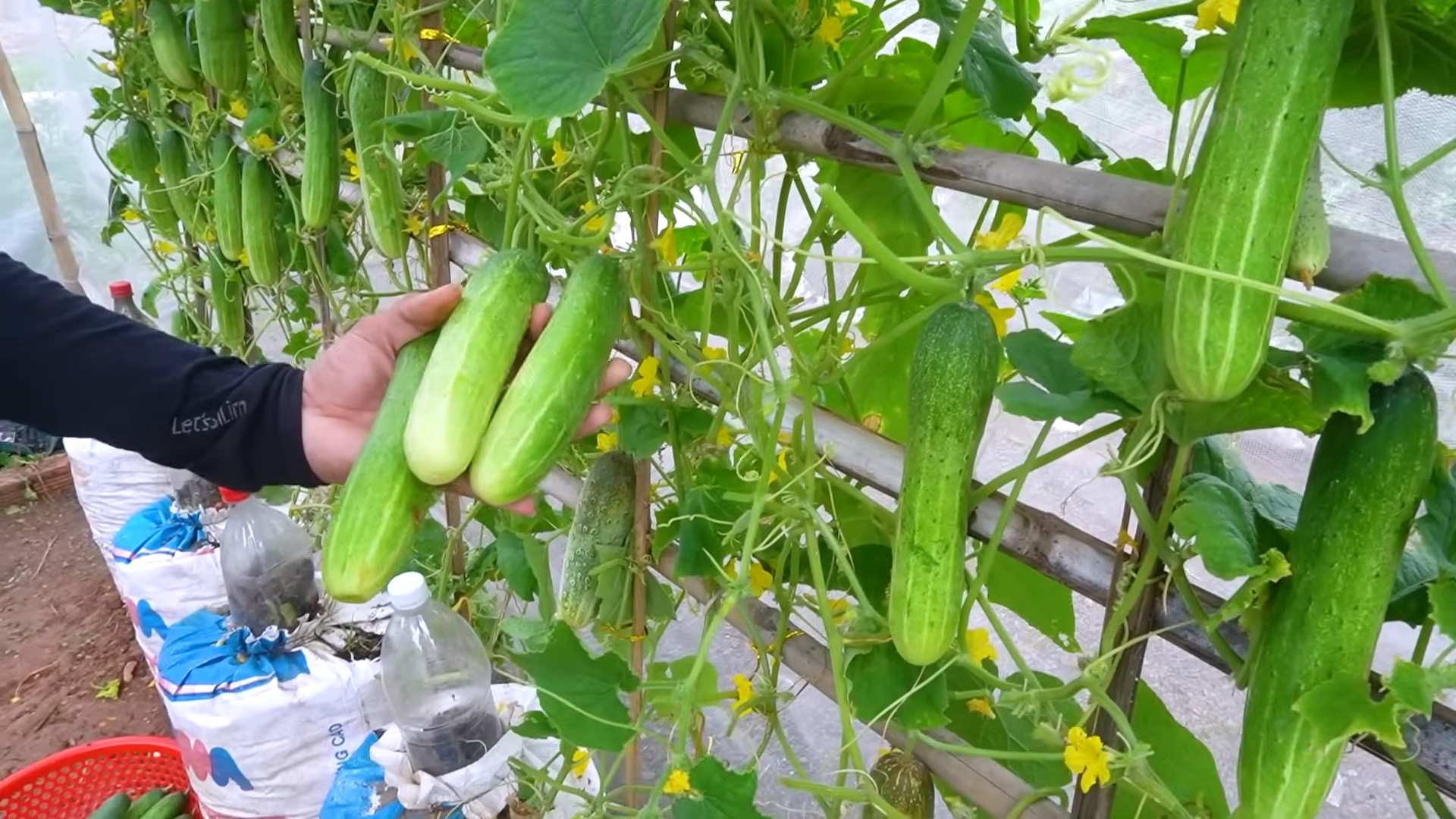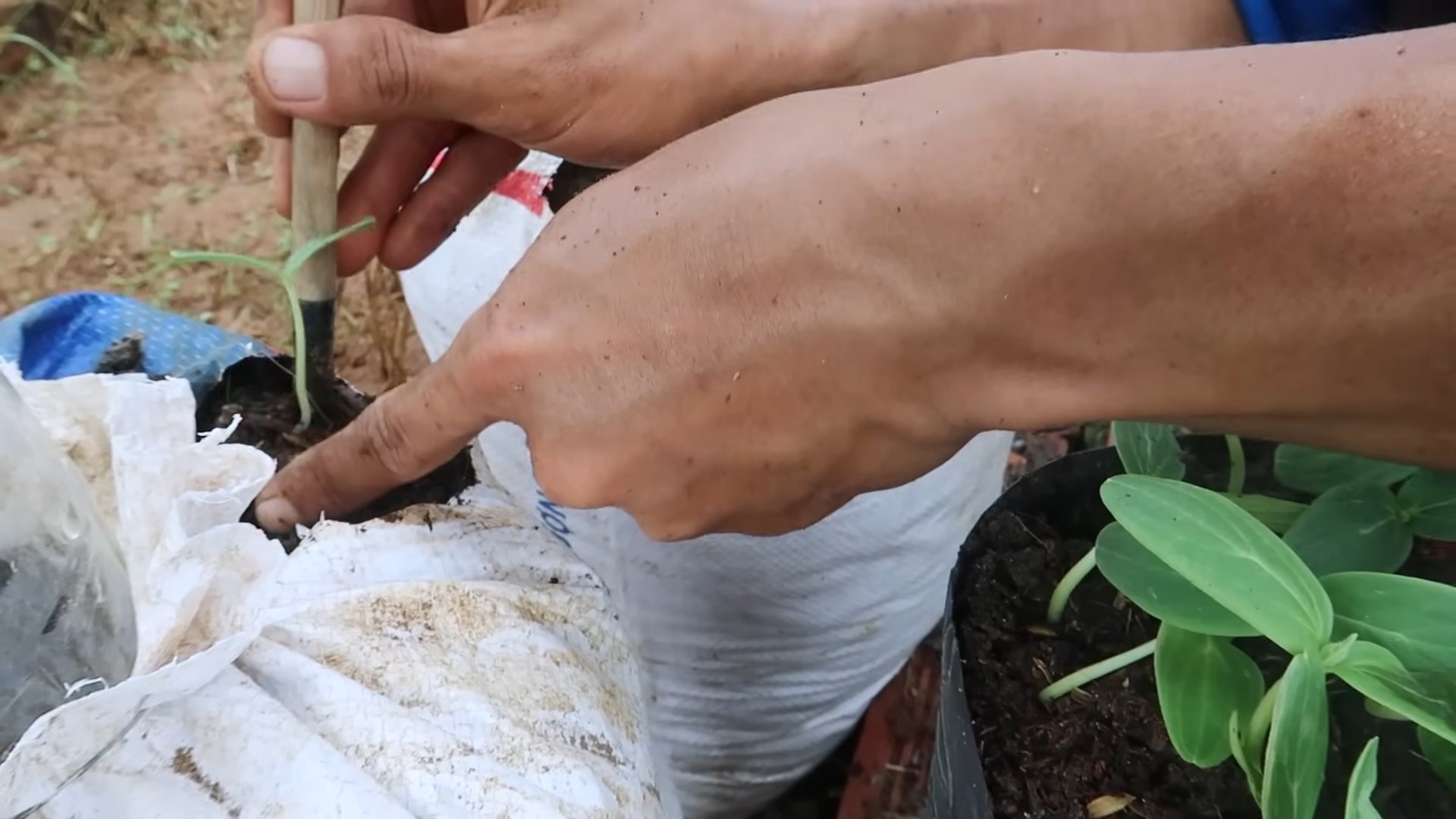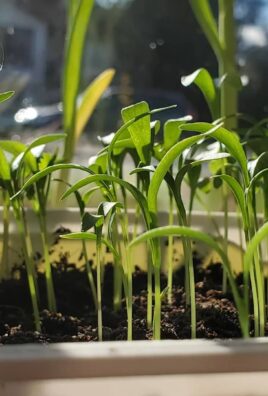Growing Cucumbers Indoors Easily might sound like a challenge reserved for seasoned gardeners, but trust me, it’s more achievable than you think! Have you ever craved a crisp, refreshing cucumber in the dead of winter, only to be met with bland, overpriced options at the grocery store? I have! That’s why I dove headfirst into the world of indoor cucumber cultivation, and I’m here to share all my secrets with you.
The history of cucumber cultivation stretches back thousands of years, with evidence suggesting they originated in India. From ancient civilizations to modern-day kitchens, cucumbers have been a staple ingredient, valued for their refreshing taste and nutritional benefits. But traditionally, growing them meant relying on warm weather and ample outdoor space. Not anymore!
In today’s world, where access to fresh, healthy produce is more important than ever, learning how to grow your own food, even in a limited space, is incredibly empowering. This DIY guide will equip you with the knowledge and simple tricks you need to successfully cultivate delicious cucumbers right in your home. Imagine the satisfaction of harvesting your own homegrown cucumbers, knowing exactly where they came from and what went into growing them. Plus, growing cucumbers indoors easily is a fantastic way to add a touch of green to your living space and enjoy a rewarding hobby. So, let’s get started and transform your home into a mini cucumber oasis!

Growing Cucumbers Indoors: A Beginner’s Guide
Hey there, fellow plant enthusiasts! Ever dreamt of enjoying fresh, crisp cucumbers straight from your own indoor garden, even when the weather outside is frightful? Well, dream no more! Growing cucumbers indoors is totally achievable, and I’m here to guide you through the process step-by-step. It might seem daunting at first, but trust me, with a little patience and the right setup, you’ll be harvesting delicious cucumbers in no time.
Choosing the Right Cucumber Variety
First things first, not all cucumber varieties are created equal when it comes to indoor growing. You’ll want to opt for bush or compact varieties that are specifically bred for container gardening. These tend to be more manageable and require less space than their sprawling outdoor cousins.
Here are a few of my personal favorites:
* Bush Champion: This variety is known for its high yields and compact size, making it perfect for smaller spaces.
* Spacemaster: As the name suggests, Spacemaster is ideal for containers and produces delicious, dark green cucumbers.
* Patio Snacker: This variety is specifically bred for container gardening and produces small, snack-sized cucumbers.
* Little Leaf: This is a compact variety with smaller leaves, allowing for better light penetration and air circulation.
Setting Up Your Indoor Cucumber Garden
Before you even think about planting, you need to create the perfect environment for your cucumber plants to thrive. This involves choosing the right container, providing adequate lighting, and ensuring proper ventilation.
* Container Selection:
* Choose a container that is at least 12 inches in diameter and 12 inches deep. This will give the roots plenty of room to grow.
* Make sure the container has drainage holes to prevent waterlogging, which can lead to root rot.
* Consider using a self-watering container to help regulate moisture levels, especially if you tend to forget to water your plants.
* Lighting:
* Cucumbers need at least 6-8 hours of direct sunlight per day. If you don’t have a sunny window, you’ll need to supplement with grow lights.
* LED grow lights are a great option because they are energy-efficient and don’t produce excessive heat.
* Position the grow lights about 6-12 inches above the plants.
* Use a timer to ensure your plants get consistent light exposure.
* Soil:
* Use a well-draining potting mix that is rich in organic matter.
* Avoid using garden soil, as it can be too heavy and compact for container gardening.
* You can amend your potting mix with compost or perlite to improve drainage and aeration.
* Ventilation:
* Good air circulation is essential for preventing fungal diseases.
* Open a window or use a fan to provide adequate ventilation.
* Avoid overcrowding your plants, as this can restrict airflow.
* Support System:
* Even bush varieties benefit from some support.
* A small trellis or tomato cage can help keep the vines upright and prevent the cucumbers from touching the soil.
* This also makes harvesting easier.
Planting Your Cucumber Seeds
Now for the fun part – planting! You can either start your cucumber seeds directly in the container or start them indoors and transplant them later. I personally prefer starting them indoors to give them a head start.
1. Starting Seeds Indoors (Optional):
* Fill small pots or seed trays with seed-starting mix.
* Sow 2-3 seeds per pot, about ½ inch deep.
* Water gently and keep the soil moist but not soggy.
* Place the pots in a warm location (around 70-75°F) or use a heat mat.
* Once the seedlings emerge (usually within 5-10 days), thin them to one plant per pot.
* Provide the seedlings with plenty of light.
* Harden off the seedlings by gradually exposing them to outdoor conditions for a week before transplanting.
2. Direct Sowing:
* Fill your container with potting mix.
* Sow 2-3 seeds per container, about ½ inch deep.
* Water gently and keep the soil moist but not soggy.
* Once the seedlings emerge, thin them to one plant per container.
Caring for Your Indoor Cucumber Plants
Once your cucumber plants are established, it’s important to provide them with the proper care to ensure healthy growth and abundant fruit production.
1. Watering:
* Water your cucumber plants regularly, keeping the soil consistently moist but not waterlogged.
* Water deeply, allowing the water to drain out of the drainage holes.
* Avoid getting water on the leaves, as this can promote fungal diseases.
* Check the soil moisture regularly by sticking your finger into the soil. If the top inch feels dry, it’s time to water.
2. Fertilizing:
* Cucumbers are heavy feeders, so they need regular fertilization.
* Use a balanced liquid fertilizer (e.g., 10-10-10) every 2-3 weeks.
* You can also use a fertilizer specifically formulated for vegetables.
* Follow the instructions on the fertilizer label carefully.
3. Pollination:
* Cucumbers are typically pollinated by bees, but since you’re growing them indoors, you’ll need to hand-pollinate them.
* Identify the male and female flowers. Male flowers have a long, slender stem, while female flowers have a small cucumber-like structure behind the flower.
* Use a small paintbrush or cotton swab to transfer pollen from the male flower to the female flower.
* You can also remove a male flower and gently rub it against the female flower.
* Do this in the morning, when the flowers are open.
* You’ll know if pollination was successful if the small cucumber behind the female flower starts to grow.
4. Pruning:
* Pruning can help improve air circulation and encourage fruit production.
* Remove any yellowing or dead leaves.
* Pinch off any suckers (small shoots that grow from the base of the plant) to encourage the plant to focus its energy on fruit production.
* You can also prune the main vine to encourage branching.
5. Pest and Disease Control:
* Keep an eye out for common pests like aphids, spider mites, and whiteflies.
* Inspect your plants regularly and take action immediately if you see any signs of infestation.
* You can use insecticidal soap or neem oil to control pests.
* To prevent fungal diseases, ensure good air circulation and avoid getting water on the leaves.
* If you notice any signs of disease, remove the affected leaves immediately.
Harvesting Your Cucumbers
The moment you’ve been waiting for! Harvesting your cucumbers is the most rewarding part of the process.
1. Timing:
* Cucumbers are typically ready to harvest about 50-70 days after planting, depending on the variety.
* Harvest them when they are the desired size and color.
* Don’t let them get too big, as they can become bitter and seedy.
2. Technique:
* Use a sharp knife or pruning shears to cut the cucumber from the vine.
* Leave a small piece of stem attached to the cucumber.
* Harvest regularly to encourage continued fruit production.
Troubleshooting Common Problems
Even with the best care, you might encounter some challenges along the way. Here are a few common problems and how to address them:
* Yellowing Leaves: This can be caused by overwatering, underwatering, nutrient deficiencies, or pests. Check the soil moisture, fertilize regularly, and inspect for pests.
* Lack of Fruit Production: This can be caused by poor pollination, inadequate lighting, or nutrient deficiencies. Hand-pollinate your plants, provide adequate lighting, and fertilize regularly.
* Bitter Cucumbers: This can be caused by inconsistent watering, high temperatures, or letting the cucumbers get too big. Water consistently, provide shade during hot weather, and harvest the cucumbers when they are the desired size.
* Powdery Mildew: This is a fungal disease that can cause white, powdery spots on the leaves. Ensure good air circulation, avoid getting water on the leaves, and use a fungicide if necessary.
Enjoying Your Homegrown Cucumbers
Congratulations! You’ve successfully grown cucumbers indoors. Now it’s time to enjoy the fruits (or rather, vegetables) of your labor.
* Eat them fresh in salads, sandwiches, or as a snack.
* Pickle them for a tangy treat.
* Add them

Conclusion
So, there you have it! Growing cucumbers indoors easily is not only achievable but also incredibly rewarding. Forget relying solely on grocery store produce and embrace the satisfaction of harvesting your own crisp, delicious cucumbers right from the comfort of your home. This DIY trick transforms even the smallest living space into a miniature garden, bringing a touch of nature and a burst of fresh flavor to your table.
Why is this a must-try? Because it empowers you to control the entire growing process, ensuring your cucumbers are free from harmful pesticides and bursting with flavor. Imagine the taste difference between a store-bought cucumber and one you nurtured from seed, watching it unfurl its leaves and produce vibrant, juicy fruit. It’s a culinary experience unlike any other. Plus, it’s a fantastic way to connect with nature, even when you’re stuck indoors.
But the benefits don’t stop there. Growing cucumbers indoors is also a sustainable choice. You’re reducing your carbon footprint by minimizing transportation and packaging waste. You’re also contributing to a healthier lifestyle by incorporating fresh, homegrown produce into your diet.
Ready to take your indoor cucumber garden to the next level? Consider experimenting with different cucumber varieties. Bush cucumbers are particularly well-suited for indoor growing due to their compact size. Try ‘Spacemaster’ or ‘Bush Champion’ for excellent results. You can also explore different trellising methods. While a simple stake or tomato cage works well, you might want to get creative with a DIY trellis made from bamboo or repurposed materials. This not only provides support for your growing vines but also adds a touch of visual appeal to your indoor garden.
Another variation to consider is hydroponic cucumber growing. This soilless method can be incredibly efficient and productive, allowing you to maximize your yield in a small space. It requires a bit more initial investment and knowledge, but the results can be truly impressive.
Don’t be intimidated by the prospect of growing cucumbers indoors. With a little patience, attention, and the right guidance, you can successfully cultivate a thriving indoor cucumber garden. Remember to provide your plants with plenty of sunlight, consistent watering, and adequate support.
We encourage you to give this DIY trick a try and experience the joy of harvesting your own homegrown cucumbers. Share your experiences with us! We’d love to hear about your successes, challenges, and any creative variations you’ve come up with. Post photos of your indoor cucumber gardens on social media using #IndoorCucumbers and tag us so we can see your amazing results. Let’s create a community of indoor gardeners and inspire others to embrace the joys of growing their own food. So, grab your seeds, potting mix, and a sunny spot, and get ready to embark on a delicious and rewarding gardening adventure! You’ll be amazed at how easy and fulfilling growing cucumbers indoors easily can be.
Frequently Asked Questions (FAQ)
Q: What are the best cucumber varieties to grow indoors?
A: While many cucumber varieties can be grown indoors, bush or compact varieties are generally the most successful due to their smaller size and manageable growth habits. Some excellent choices include ‘Spacemaster,’ ‘Bush Champion,’ ‘Patio Snacker,’ and ‘Salad Bush.’ These varieties are bred to produce well in containers and require less space than vining types. Vining types can still be grown, but they will need more extensive trellising and pruning.
Q: How much sunlight do indoor cucumbers need?
A: Cucumbers are sun-loving plants and require at least 6-8 hours of direct sunlight per day to thrive. If you don’t have a south-facing window that provides sufficient sunlight, you’ll need to supplement with grow lights. LED grow lights are an energy-efficient option and can provide the full spectrum of light that cucumbers need for optimal growth. Position the grow lights a few inches above the plants and adjust as they grow taller.
Q: What type of soil is best for growing cucumbers in containers?
A: Cucumbers prefer well-draining, nutrient-rich soil. A good potting mix specifically formulated for vegetables is ideal. You can also create your own mix by combining equal parts of potting soil, compost, and perlite or vermiculite. The compost provides essential nutrients, while the perlite or vermiculite improves drainage and aeration. Avoid using garden soil, as it can be too heavy and compact for container gardening.
Q: How often should I water my indoor cucumber plants?
A: Cucumbers need consistent moisture to produce healthy fruit. Water your plants deeply whenever the top inch of soil feels dry to the touch. Avoid overwatering, as this can lead to root rot. Ensure that your containers have drainage holes to allow excess water to escape. During hot weather, you may need to water your plants more frequently. Check the soil moisture daily and adjust your watering schedule accordingly.
Q: Do I need to fertilize my indoor cucumber plants?
A: Yes, cucumbers are heavy feeders and benefit from regular fertilization. Start fertilizing your plants about two weeks after they emerge, using a balanced liquid fertilizer diluted to half strength. Continue fertilizing every two weeks throughout the growing season. You can also use a slow-release fertilizer at planting time to provide a steady supply of nutrients. Look for a fertilizer that is specifically formulated for vegetables and contains essential micronutrients.
Q: How do I pollinate my indoor cucumber plants?
A: Cucumbers are typically pollinated by bees, but since you’re growing them indoors, you’ll need to hand-pollinate the flowers. Use a small paintbrush or cotton swab to transfer pollen from the male flowers to the female flowers. Male flowers have a long, slender stem, while female flowers have a small cucumber-like structure behind the flower. Gently brush the pollen onto the stigma of the female flower. Repeat this process every day for several days to ensure successful pollination.
Q: How long does it take for cucumbers to mature indoors?
A: The time it takes for cucumbers to mature indoors depends on the variety and growing conditions. Generally, you can expect to harvest your first cucumbers about 50-70 days after planting. Check the seed packet or plant tag for specific information on the maturity time for your chosen variety. Harvest cucumbers when they are the desired size and color, as they can become bitter if left on the vine for too long.
Q: What are some common pests and diseases that affect indoor cucumbers?
A: Common pests that can affect indoor cucumbers include aphids, spider mites, and whiteflies. These pests can be controlled with insecticidal soap or neem oil. Diseases that can affect indoor cucumbers include powdery mildew and fungal leaf spots. These diseases can be prevented by providing good air circulation and avoiding overwatering. If you notice any signs of pests or diseases, treat them promptly to prevent them from spreading.
Q: How do I prune my indoor cucumber plants?
A: Pruning can help to improve air circulation and encourage fruit production. Remove any yellowing or dead leaves, as well as any suckers (small shoots that grow from the base of the plant). You can also prune the main vine to encourage branching and more fruit production. If you’re growing a vining variety, train the vines to climb a trellis or support structure.
Q: Can I grow cucumbers indoors year-round?
A: Yes, with the right conditions, you can grow cucumbers indoors year-round. You’ll need to provide supplemental light during the winter months to ensure that your plants receive enough sunlight. You’ll also need to maintain a consistent temperature and humidity level. With proper care, you can enjoy fresh, homegrown cucumbers all year long.





Leave a Comment